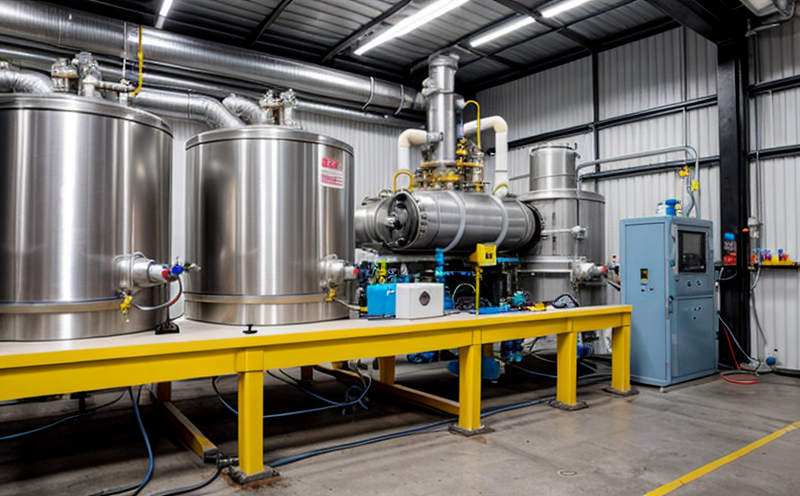ASTM E261 Standard Test for Determining Neutron Flux Using Activation Foils
The ASTM E261 standard provides a method for determining neutron flux in nuclear reactors and other environments where neutrons are present. This service is essential for ensuring the safe and efficient operation of facilities that rely on nuclear technology, such as research reactors, power plants, and irradiation facilities.
Neutron flux measurement is critical for several reasons. It allows operators to monitor the performance of their reactor core, optimize fuel utilization, and ensure compliance with regulatory requirements. The ASTM E261 method involves exposing activation foils to neutron radiation, allowing them to capture neutrons which then decay into radioactive isotopes. By measuring these isotopes, technicians can determine the neutron flux.
The process begins with the selection of appropriate activation foils, typically made from materials such as silver and indium, due to their high neutron cross-sections. These foils are then placed in strategic locations within the reactor core or test environment. After exposure, they are removed, processed, and analyzed using gamma spectroscopy.
ASTM E261 specifies detailed procedures for specimen preparation, including precise cutting and handling techniques to minimize contamination. The standard also outlines rigorous quality control measures to ensure accurate results. Compliance with ASTM E261 is crucial for ensuring consistent and reliable measurements across different facilities and environments.
| Industry Applications | Description |
|---|---|
| Research Reactors | Precision measurement of neutron flux to optimize fuel utilization and ensure safe operation. |
| Nuclear Power Plants | Continuous monitoring for operational efficiency and regulatory compliance. |
| Irradiation Facilities | Evaluation of materials under high neutron exposure conditions for quality assurance. |
The ASTM E261 method is widely recognized for its accuracy and reliability, making it a preferred choice for neutron flux measurement in various sectors. Its application ensures that facilities can operate safely and efficiently while maintaining regulatory compliance.
- Research Reactors: Measure neutron flux to optimize fuel utilization and ensure safe operation.
- Nuclear Power Plants: Continuously monitor neutron flux for operational efficiency and compliance with regulations.
The ASTM E261 method is not only limited to these sectors but also finds application in other areas such as medical irradiation facilities, where the quality of radiation treatment must be precisely controlled. This ensures that patients receive the correct dosage while minimizing exposure risks.
| Use Cases and Application Examples | Description |
|---|---|
| Precision Measurement in Research Reactors | Determining neutron flux to optimize fuel utilization and ensure safe operation. |
| Continuous Monitoring in Nuclear Power Plants | Maintaining operational efficiency and compliance with regulatory requirements. |
| Evaluation of Materials in Irradiation Facilities | Ensuring the quality of materials exposed to high neutron flux for long-term reliability. |
In addition to these applications, ASTM E261 is also used in educational institutions and laboratories for training purposes. This ensures that future professionals are proficient in neutron flux measurement techniques, maintaining a skilled workforce capable of handling complex nuclear technology.
- Precision Measurement: Determining the exact amount of neutron flux to optimize fuel utilization and ensure safe operation.
- Continuous Monitoring: Ensuring operational efficiency and compliance with regulatory requirements.
- Evaluation of Materials: Ensuring the quality of materials exposed to high neutron flux for long-term reliability.
The ASTM E261 method is a cornerstone in the field of nuclear testing, providing a reliable means to measure neutron flux. This service is critical for maintaining safety and efficiency across various sectors relying on nuclear technology.





